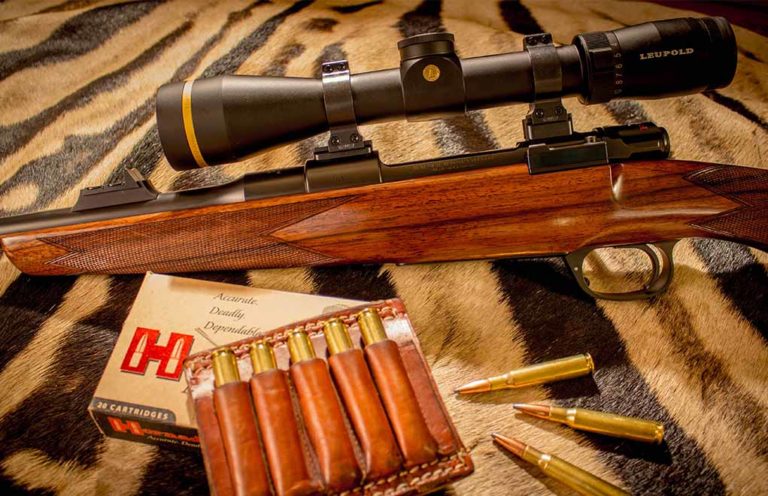
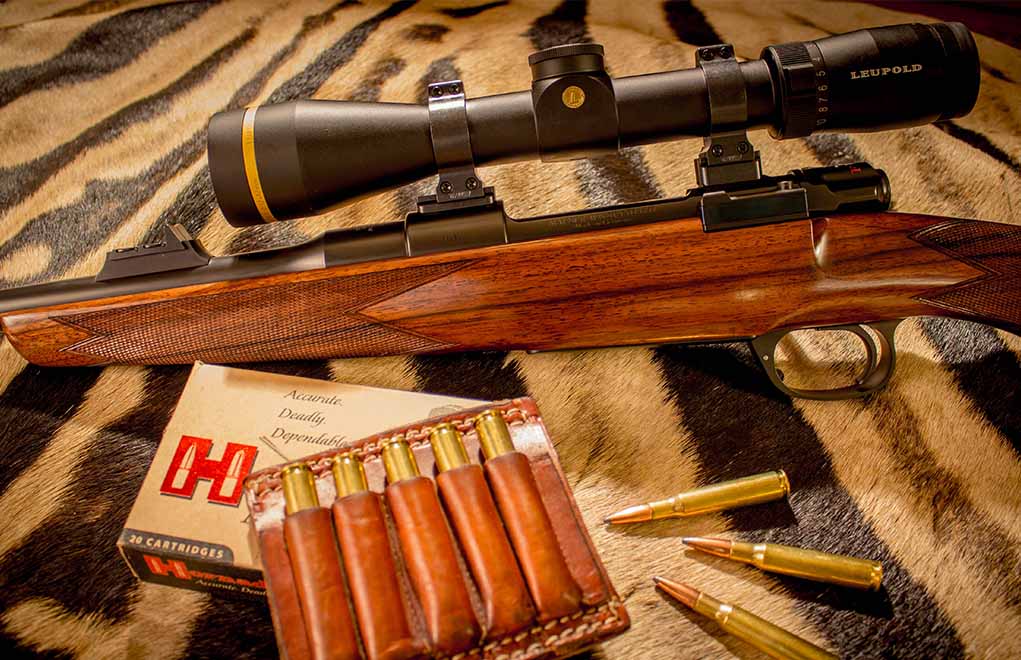
Too much magnification can be a waste of money and too little an impediment to accuracy. What you need to know is how to select a rifle scope based on your magnification needs.
What To Look For On Specific Scopes:
- A general hunting scope should have flexible magnification.
- Here, the low end proves as important as the high, for shots made in thick timber and other dark places.
- Power counts in target/varmint scopes, so the look for high magnification ranges.
- A large objective lens is helpful, giving a clearer image and gathering more light.
- For dangerous-game rifles a scope with low power and a maximum field of view pays dividend.
- Look for tough makes and models that won't fail in a pinch.
- Depending on what you'll use it for, a rimfire will excel with any of the above mentioned optics.
In my not-so-humble opinion, there are two major facets of a rifleman’s gear that have made huge improvements in the past three decades: projectile design and construction, and optics. The former is a topic I’ve spent a great amount of time studying, but the latter is a topic I feel equally passionate about. I’ve heard many reiterate the phrase, “Your riflescope should cost twice what your rifle does.” While in certain circumstances that might be true, the overall quality of riflescopes has seen remarkable improvements.
I remember the story of my father (in his early 20s) actually removing the riflescope from his .308 because it simply wouldn’t hold zero. He replaced it with one of the best scopes he could find: a Redfield Widefield 3×9 variable. It sits atop that rifle to this day. At that time, variable riflescopes were sketchy at best, often shifting point of impact with a change in magnification. Thankfully, almost all of that is over.
We have scopes that are so rugged, they can double as a finishing hammer without losing zero, and we have scopes that can detect life in another solar system. There are zero-magnification models—a bit more effective than iron sights, because they put the target and crosshairs on one focal plane—and there are scopes with magnification up into the 30-plus range.
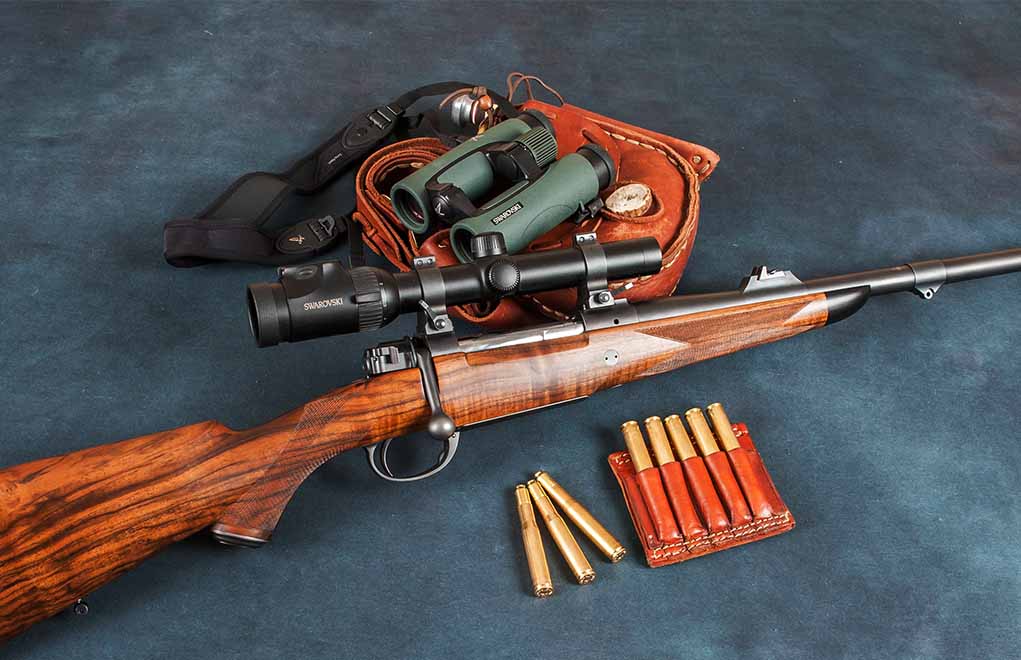
There are scopes with 3x, 4x, 5x, 6x and even 8x magnification ranges, scopes with 24mm (1 inch) main tubes, as well as 30mm, 34mm and even 35mm. Some scopes have no flared bell end (they use a front lens that fits into the main tube), and some have a lens large enough to gather more light than your eye can use.
All in all, it can be a bit overwhelming to pick out a riflescope, especially if you want one to fill several different roles.
Scope Out More Optic Information:
- A Primer On Long-Range Optics
- Finding The Right Big-Bore Rifle Optic
- Red Dot Optics And MOA
- Why It’s Crucial To Test The Tracking Of Your Riflescope
- What’s The Difference Between European- And Asian-Built Optics?
I feel comfortable saying that most of us—and that includes me (on certain rifles)—use too much magnification. Perhaps it’s the idea that higher magnification is better. In some instances, it is. But I’ve come to rely on the quality of the glass rather than larger objective lenses and higher magnification.
The All-Around Hunting Scope
All right, you’ve done your homework and picked out what you consider to be the consummate all-around hunting rifle; one you plan to take with you on a good number of hunting trips, both at home and abroad. While the idea of picking a pair of scopes—keeping them zeroed in a good set of detachable rings—for the same rifle is one I’ve embraced in the past, let’s try to pick one that will give good service in nearly any situation.

The classic 3-9x still makes perfect sense after all these years, because at the lowest setting, even close shots are manageable. Yet, at 9x shots, they can be made out to the 400-yard mark and beyond. These scopes are generally the most affordable, but they offer quite a value to the hunter. I’d rather have a 3-9x of the best quality than a higher or wider magnification range of lesser quality, because the former will give the clarity and reliability you want, especially if you own one hunting rifle. Now, while a generation ago 3x was the standard magnification range, today, things have changed, with the 6x and 8x scopes giving what might be the ultimate in flexibility to the hunter.
All—2-10x, 2.5x-10x, 2-12x, 1-8x, 3-12x—fit nearly the same bill, and what you’re looking for is flexibility. Let’s imagine a few very real situations in order to best explain why I feel you need the flexibility.
Your favorite deer rifle—let’s assume it’s an all-around big-game cartridge such as the .270 Winchester, 7mm Remington Magnum, .30-06 Springfield or .308 Winchester—can, and will, make a solid choice for almost all your hunting. That means the same rifle will be with you in your favorite deer stand and also might get the nod for bear hunts in the spring in Canada and the northern U.S. states.

While a 12x scope might be helpful for anchoring a whitetail across a 350-yard hay lot, it wants a good low end in order to pick out the proper shot on a fuzzy, black animal in the shadows. As I get older, I find I’m more comfortable with a low end no higher than 2x or 3x and will sacrifice the top end before the bottom.
There is also a definite shift in the scope designs, and we’re seeing more 30mm main tubes. I don’t think this is a bad move, providing that the scope you choose can be mounted low enough to obtain a good cheek weld on the stock. Riflescopes seem to be growing in both size and weight. While this might be fine for a target rifle or a varmint rifle, it can drastically affect the balance of a hunting rifle.
Bigger scopes need to be mounted higher, and chin weld (as opposed to cheek weld) greatly increases felt recoil. There’s an emphasis placed on taking shots only from supported positions, but the reality that any deer hunter will attest to is that you’ll invariably need to make a fast offhand shot at some point in your hunting career. A well-balanced rifle with a low-mounted scope—with a wide field of view—will greatly help you connect. Before buying a scope, see which ones can be mounted in low rings on your rifle. And, if you can’t get a 50mm objective lens, trust me: You can do just fine with a 40 or 44mm.
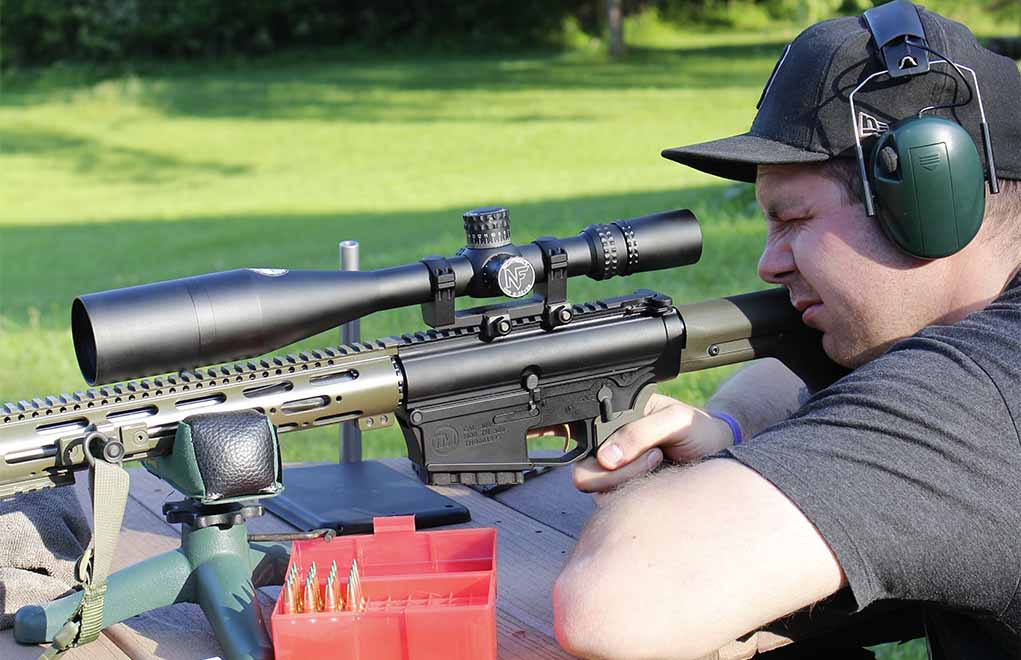
There are several models I’ve come to truly appreciate, including the Leupold VX-6 2-12x42mm and the VX-5HD 2-10x42mm—both having 30mm tubes—and the VX-3i 3.5-10×40 with a 1-inch tube. Yes, I have an unabashed penchant for Leupold’s glass, although I use other brands, but to me, these three represent just about the best value in an all-around rifle scope. There are higher-end models, such as the Swarovski Z8i line, and lower end models as well, such as the Bushnell Nitro 3-12x44mm, but I like the way Leupold blends size, weight and strength. As a result, its scopes balance perfectly with a good rifle.
An adjustable objective is an option you might want to consider, depending on how far you feel comfortable shooting. My own self-imposed limit is 400 yards maximum, and I can get the job done without worrying about parallax issues at that range. If you feel more comfortable with an AO, so be it; I won’t argue.
Long-Range Target/Varmint Scopes
Here’s where the behemoth scopes belong, because you’re looking for pinpoint precision on a very small target and usually at longer distances. You’ll see larger main tubes—not for their light-gathering capabilities, but for their adjustment ranges—and an adjustable objective lens, as well as higher magnification ranges. These scopes (5-25x, 7-35x, 4-32x) aid in hitting prairie dogs at 600 yards, as well as steel at 1,500 and more.
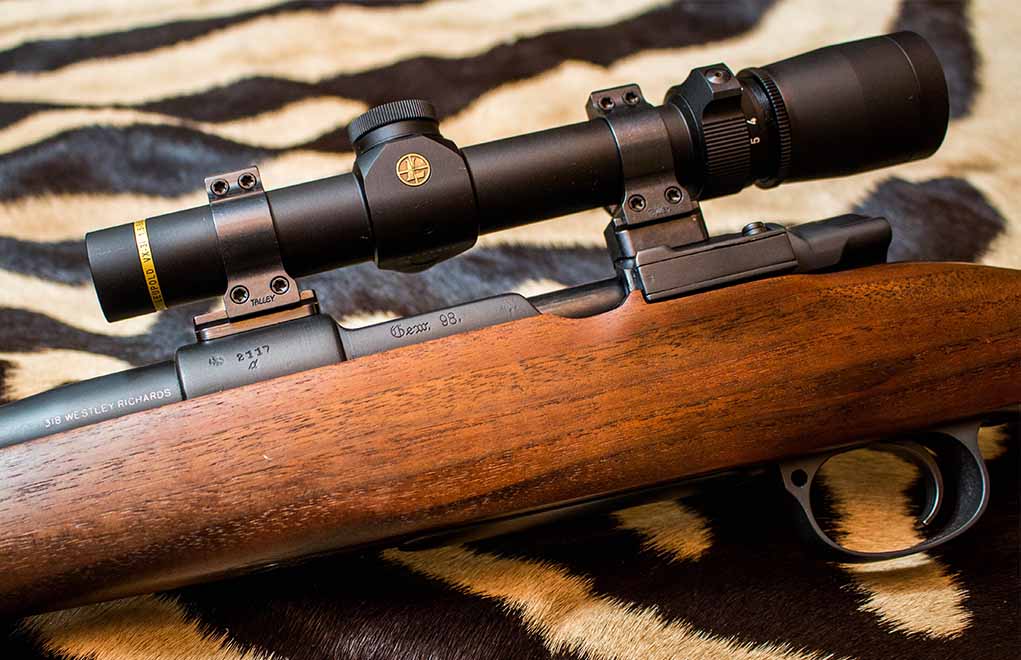
I’ve been most comfortable with a scope with a top-end magnification of 20x to 25x; when using more magnification than that, mirage became a serious issue. Most shooters would think that more magnification would be needed to hit a steel plate at 1,500 yards or out to one mile, but I can assure you that this isn’t the case.
In fact, it’s sometimes easier to lower the magnification in order to combat the effects of mirage. While shooting at the Leupold Optics Academy in the high desert of eastern Oregon, we were using the excellent Mark 5 HD 7-35x56mm and were having all sorts of trouble focusing targets at higher magnifications. My shooting partner and I dialed down the magnification to 12x, and each made solid hits on the course from 500 to 1,500 yards. Sometimes, less is more.
However, if you like the idea of having more magnification, you can dial down the more-powerful scopes … but you can’t increase the magnification on the lesser scopes. The offset is that the higher-magnification scopes are generally larger and heavier. My favorite varmint rifle—a well-worn Ruger Model 77 MKII in .22-250 Remington—wears an older Leupold Vari-X3 6.5-20x40mm with the AO on the ring of the objective lens. I spend most of my time with this rifle with the scope set on 14x.

Depending on whether you’re shopping for a varmint scope or a target scope (I consider the varmint scope to be used at 700 yards or so, while target scopes need to reach much farther), you can choose the tube size, objective lens size and magnification range to suit your needs. I’ve made 500-yard kills on prairie dogs with a 10x scope, but I think a sound top end for a varmint scope would be 16x; and a bottom end of 6x poses no handicap.
Dangerous-Game Scopes
You’ve seen them on those big rifles: a riflescope that looks like the front bell has been sawed off. They’re designed for maximum field of view, and their magnification rarely exceeds 6x, although recent designs reach 8x. Their bottom end is usually 1x or 1.5x in order to facilitate fast target acquisition when dealing with dangerous game in thick brush. They also make excellent choices for lighter rifles used at closer ranges, where the bigger scopes prohibit the low mounting that this style of scope allows. They offer much more eye relief than the higher-magnification scopes do, and that’s an important consideration when using the hard-kicking safari cartridges such as the .375 H&H, .416 Rigby and .458 Lott.
For years, the industry standard has been the Leupold VX-3 1.5-5x20mm with a 1-inch tube. This scope is light and rugged: It will stand up to some horrific recoil without losing zero. It also allows the shooter to accurately place a shot at 250 yards when set at 5x yet shoot an animal at fewer than 10 yards very quickly.
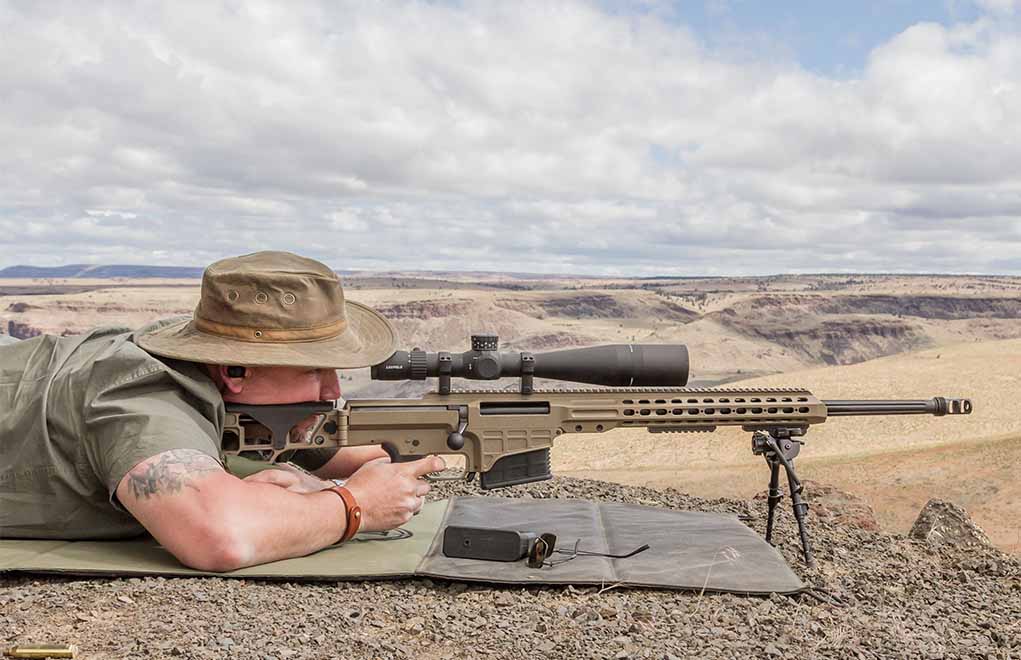
There are many models with 30mm tubes; I like the Trijicon AccuPoint 1-6×24 and the Leupold VX-5HD 1-5×24. They gather plenty of light. Grizzly bears in thick coastal vegetation, Cape buffalo in jesse bush and even black bear in hemlock forests—all these situations make sense for a scope in the 1-5x or 1-6x range. I put a Leupold VX-3i 1.5-5×20 on my 98 Mauser .318 Westley Richards and my Model 70 .416 Remington. My Bansner & Co. .404 Jeffery wears a VX-5HD 1-5×24, which just might take the crown in the next few years. All are in low Talley detachable rings in order to access the iron sights.
My favorite dangerous-game rifle—my Heym Express by Martini in .404 Jeffery—has a straight bolt handle, and while I’ve had a couple of very nice scopes on that rifle (including the Trijicon AccuPoint and Swarovski Z6i), they needed to be mounted too high for my liking. I wanted a scope solution that was tough enough to handle the .404’s recoil yet be mounted low to the bore. I found a unique solution when I located an older fixed-power Leupold Compact 2.5x scope. Sitting in low rings, that little scope doesn’t disturb the balance of the Heym rifle, gives me plenty of eye relief and enough magnification to get the job done.
Rimfires
For rimfire rifles, all three of the categories described above can, and will, apply, depending on the application of the rifle. I use a 1-4×20 turkey scope on my .22LR, because the parallax is set for 75 yards (about the farthest I use my .22), and the reticle is fine enough to place shots accurately. My wife and my dad both like a 3-9×40 on their rimfires, and I’ve used some of the big target scopes on my rimfire when some buddies were getting together for a backyard competition.
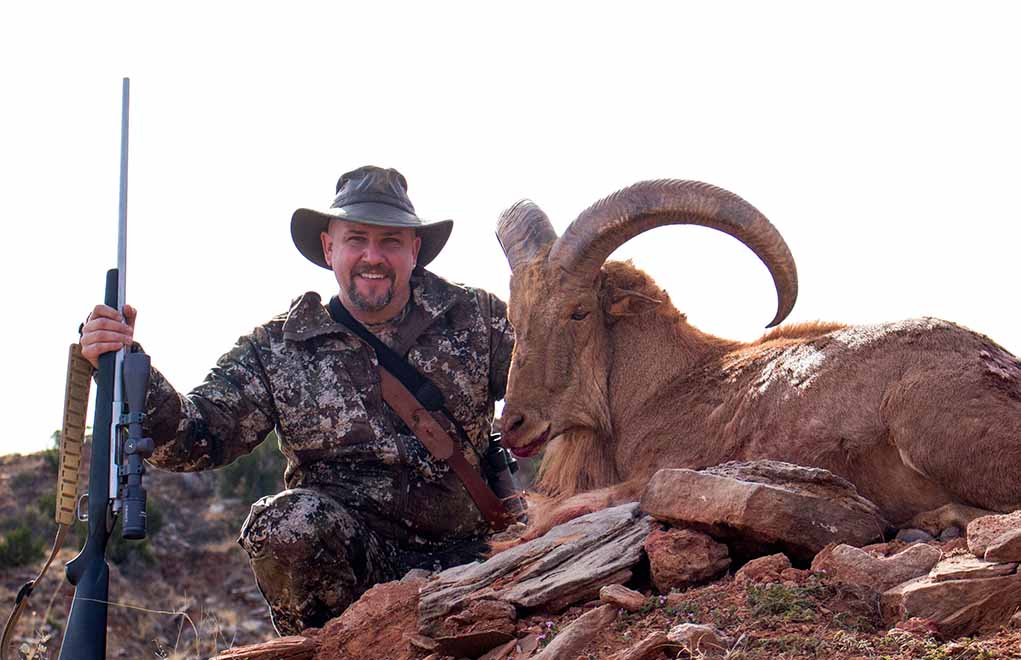
All said, a bit of planning while shopping for optics can make your shooting experience all the better. Sometimes, a scope that seems perfect has some drawbacks that can drive you nuts. Examine some other people’s rigs, looking at eye relief—and how that changes as the magnification changes—as well as height above the bore. It can be difficult to examine light transmission qualities in the store (the fluorescent lights can be deceiving); if at all possible, take the scope outside to try. You might end up using less magnification than you thought, especially with the higher-quality scopes.
The article originally appeared in the October 2019 issue of Gun Digest the Magazine.

Next Step: Get your FREE Printable Target Pack
Enhance your shooting precision with our 62 MOA Targets, perfect for rifles and handguns. Crafted in collaboration with Storm Tactical for accuracy and versatility.
Subscribe to the Gun Digest email newsletter and get your downloadable target pack sent straight to your inbox. Stay updated with the latest firearms info in the industry.

![Best Concealed Carry Guns In 2025 [Field Tested] Wilson Combat EDC X9S 1](https://gundigest.com/wp-content/uploads/Wilson-Combat-EDC-X9S-1-324x160.jpg)


![Best 9mm Carbine: Affordable PCCs [Tested] Ruger Carbine Shooting](https://gundigest.com/wp-content/uploads/Ruger-Carbine-Shooting-100x70.jpg)
![Best AR-15: Top Options Available Today [Field Tested] Harrington and Richardson PSA XM177E2 feature](https://gundigest.com/wp-content/uploads/Harrington-and-Richardson-PSA-XM177E2-feature-100x70.jpg)

My 6.5 PRC Browning X-Bolt Pro is a long range mountain rifle for hunting here in Nevada.
The scope is a Bushnell LRTS 4.5 – 18 x 44 with G3 illuminated reticle.
MY CRITERIA:
1. FFP for using any magnification for the hold my LRF binoculars give me
2. G3 small “Xmas tree” reticle B/C I’m used to that kind of reticle in competition (H59)
3. Illuminated reticle for dark backgrounds where non-illuminated reticles get lost.
4. 44 mm objective to keep weight down
5. 18x is enough for shooting to even 1,000 yards on antelope, 4.5x is low enough for close in shooting
6. 28 oz. is “light enough” given the scope nicely meets all my other requirements
7. very good quality-to-price ratio
Eric B.